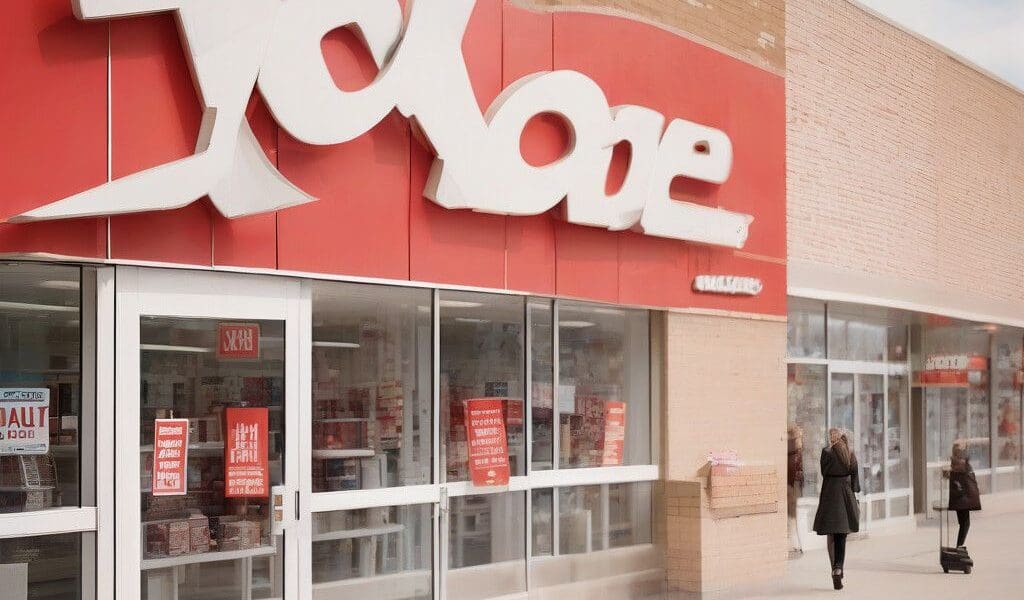The retail landscape continually shifts, reminding us that even once-iconic brands like Kmart can face stark realities. As the curtain falls on its Bridgehampton, New York store, set to close on October 20, 2024, Kmart will take a crucial step closer to extinction in the U.S. market. With this closure, the retailer—founded in 1962—will leave an indelible mark on its customers who have experienced its blue light specials and the nostalgia of yesteryear.
At its peak, Kmart boasted over 2,000 stores across the United States, making it a household name and a formidable competitor against other retail giants. However, the decline of Kmart is symptomatic of broader trends in the retail sector, particularly the increasing competition from online platforms like Amazon and formidable brick-and-mortar players like Walmart and Target.
According to data from the National Retail Federation, e-commerce sales surged by over 44% in 2020 alone, as consumers pivoted away from physical stores during the pandemic. This dramatic shift in consumer behavior underlines the urgency for traditional retailers to adapt or risk losing relevance. Unfortunately for Kmart, its attempts to modernize and compete have not resonated with consumers as effectively as those of its competitors.
As of April 2022, Kmart operated only three stores in the U.S., with the Bridgehampton location representing one of the last two full-sized stores still standing. The remaining Kmart locations in Guam and the U.S. Virgin Islands, along with a single store in Miami, highlight a stark reality: consumers are no longer prioritizing traditional department store offerings. In fact, data from various retail analysts point out that consumer preferences have increasingly gravitated towards curated shopping experiences, which established players like Target have adopted. Target’s focus on modern merchandising strategies, merchandising partnerships, and an enhanced in-store experience has proven beneficial. This leaves Kmart struggling in a rapidly changing market.
Kmart’s challenges are not only due to competition but also stem from key marketing missteps. For instance, Kmart’s attempt to revive its brand with new marketing campaigns has often felt inconsistent. In 2021, for instance, the brand made headlines with its “Shop Your Way” program designed to engage customers through personalized promotions and rewards. However, execution failures and a lack of visible engagement led to quick abandonment by a customer base looking for more meaningful interactions in their shopping experience.
Conversely, competitors like Walmart have embraced technology to maintain customer engagement through omni-channel marketing. Store associates equipped with tablets can assist shoppers, offering a seamless connection between online products and in-store availability, which significantly enhances the shopping experience. This contrasts sharply with Kmart’s approach, which lacked innovative technology integration to streamline operations and customer experience.
The future of retail necessitates more than just being present; it requires excellent service delivery, user-friendly shopping interfaces, and community involvement. Retailers must curate experiences that resonate with today’s consumer mindset—one that values convenience, personalization, and sustainable practices.
An example of effective adaptation in the retail sector can be seen in Costco’s success. With its membership model, Costco has built an unshakeable customer loyalty base. The company’s commitment to value and quality keeps members returning, ultimately driving more traffic and revenue. This demonstrates that a strong business model paired with excellent customer engagement practices can still yield success in today’s market.
The closure of Kmart’s Bridgehampton store may serve as a pivotal lesson for other potential investors in the retail space. It highlights the essential nature of adapting not only to the marketplace but also to the evolving preferences and expectations of consumers. Retailers that focus on innovative marketing strategies, personalized customer interactions, and technology integration can position themselves as leaders amidst fierce competition.
As Kmart takes its final bows in Bridgehampton, it leaves behind a legacy that has shaped American retail. The challenges it faced provide key insights into the importance of adapting to customer needs and market changes. For those looking to thrive in the volatile retail environment, the message is clear: evolution and consumer connection are paramount.
The winds of change in retail are clear. Successful brands must be ahead of the curve, ready to meet the needs of today’s shopper while ensuring that their offerings resonate.
Kmart’s story is a cautionary tale that emphasizes this essential truth in the retail narrative.











